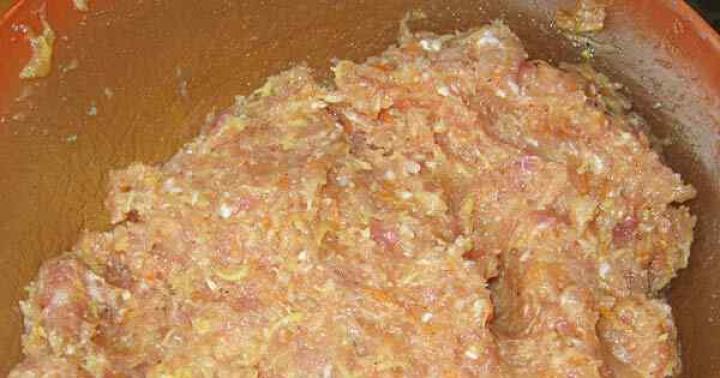Skis are one of the most popular equipment for winter sports. There is a heated debate among amateurs and professionals about best option fastenings – NNN or SNS. Which alternative is more reliable, and what is the general difference between them? The differences are visible even upon a superficial study of the issue.
Definition
NNN is a special system for fastening boots to cross-country skis, proposed by Rottefella from Norway. A distinctive feature is the presence of two parallel flexors (stops), into which the toe of the shoe rests when pushing. The fastening is universal and is suitable for any boots produced for NNN, with the exception of children's and youth boots.
NNN mount
SNS is a system for fastening shoes to cross-country skis, created by Salomon from France. The most important feature of the design is the presence of a central protrusion into which the toe of the boot rests when pushing. The presence of two brackets (one of which is located in front of the toe) for fixing the shoe allows for increased controllability of the ski, which is more responsive to the athlete’s movements.
 SNS mount
SNS mount Comparison
Thus, the question of choosing between NNN and SNS depends on the individual athlete, his needs and preferences. The technical differences between these types of fastenings are as follows. NNN has two parallel protrusions for fastening boots, SNS has one central one. This point must be taken into account when choosing boots, as they must be compatible with the fastening system.
At the same time, the NNN lock is located under the fingers, which makes the ride more manageable. The SNS has it in front of the toe, and this is considered a more reliable solution in terms of wear. NNN fastenings are presented with 4 alternatives in terms of rigidity, while SNS only three. However, choose suitable option for professional sports it is possible only after training, since the anatomical features of the athlete must be taken into account.
Conclusions website
- Location and number of guide protrusions. NNN has two parallel protrusions, SNS has one central one.
- Fastening system. The NNN fastener is located under the toes, 10 mm from the toe of the boot, while for the SNS it is located directly in front of the toe.
- Controllability. NNN provides more control over the ski when skating than SNS.
- Number of species. NNN is available in 4 stiffness options, SNS – in three options.
Fastenings – important element ski equipment. As a rule, the installation of bindings is done by the store, but some skiers prefer to do it themselves. Let's find out how they succeed.
Types of ski bindings
There are three types of ski bindings:
- Hard (welt) – Nordic Norm 75 mm.
- Semi-rigid – straps, elastic bands and buckles.
- System:
- SNS Salomon
- NN Rotofella
Since the first two types are gradually going out of use due to their total imperfection and moral obsolescence, there is no need to talk about them. It is much more interesting to talk about system fastenings.
It is worth noting that if a skier decides to install the NN 75mm, the installation instructions below will suit him.
Systems from Salomon and Rotofella
These fastening systems have a different number of longitudinal components, functionality and boot stabilization indicators, and are also available in various modifications. They are great for cross-country skis, the most common type in skiing.
- Rotofella system NNN appeared a little later than NN 75mm. The boots are fastened and stabilized here thanks to two longitudinal guides. The functionality of these mounts is not inferior to NN.
- In the Salomon SNS system Only one hinge mount is used. Due to the peculiarities of the sole of the boots designed for such bindings, the athlete can control the ski while performing any move. This is the most modern version of ski bindings.
There are no significant disadvantages or advantages between these systems. They are more convenient, more practical and more modern than their predecessors, so they cost a little more.

How to install bindings on cross-country skis yourself
To install the fasteners, you will first need the following equipment:
- Cross-country skis and bindings for them;
- A paper template for marking or a jig;
- Screwdriver (cross bit + drills 3.4 – 3.6 mm);
- Marker;
- PVA glue;
- Ruler;
- Awl.
Installation instructions
Installation of ski bindings occurs in several stages.
Step 1: Center of Gravity
The first step is to determine the center of gravity of the skis. To do this, the ski is placed on the edge of the ruler and moved along this surface until the skis freeze, like balanced scales, parallel to the floor.
The center balance lines must be marked with a marker. The marked line will coincide with the axis of fastening the bracket.
Step 2: Marking
The next step is to mark the holes on the ski area. This action is carried out using a paper template, which is usually supplied with the fasteners. If you don’t have it on hand, it doesn’t matter, you can download it from the Internet, or mark the ski using an awl, attaching the assembled mount so that the center of gravity coincides with the axis of fixation of the shoe.

In this case, in the NNN system the holes are located in front of the axis of the center of gravity, and in the SNS the axis lies directly under the mount. For professional marking, a conductor is used.
Step 3: Drilling Holes
Before drilling, you should check the distance between the holes located on the mount with the distance between the points marked during marking.

Holes for Rottefella are drilled with a drill with a diameter of 3.4 mm, and for Salomon - 3.6 mm. The depth of the holes is 10 mm. Drilling is performed at medium speed with light pressure. To ensure reliable fixation, the finished holes are blown and then filled with glue.
Step 5: Assembly
Now that the holes are ready, you need to attach the fasteners and tighten the screws tightly. After which the ski is left to dry (about 10-12 hours).
The cross-country skis are now ready for use. As you can see, there is nothing difficult about this. The main thing is to be careful and attentive, as well as to have all the necessary tools.
After purchasing skis and boots, choose bindings. With their help, the foot is held on the ski and the entire riding process is controlled. If chosen incorrectly, riding will be uncomfortable and dangerous.
- The first thing to do is determine the center of gravity. To do this, place the ski on any object to create a kind of “swing”. The point at which the ski will be in equal proportions on both sides is the center of gravity.
- The mounting dimensions are noted and the center is selected. To do this, you need to draw a longitudinal line, dividing the ski into two equal parts.
- When all the marks are made, you need to start fixing. To do this, you need to drill holes and secure the product with screws. You can additionally coat the surface of the structure with glue.
After all the steps are done, you need to leave the skis to dry. This process takes at least 12 hours. It is advisable to leave them for a day.
When, it is necessary to take into account the individual parameters of a person. To make them comfortable, it is necessary to take into account the human anatomy and the shoes used for riding.
Skis today are produced for a variety of purposes - for beginners and experienced athletes, for running or mountains.
Accordingly, models differ in the materials from which they are made, length and width, and necessarily in the types of fastenings.
Since the choice of ski boots depends on the chosen bindings, and sometimes even special design solutions are required in the design of the skis themselves, the issue with them should be resolved first.
Retro style mounts
Considered obsolete but still in use, fastenings known as NN-75. These are the devices that parents of today's athletes are accustomed to calling hard.
They consist of a plate with pins and a clamping bracket. Boots for such fastenings must have appropriate holes in the sole.
Such mounts are very cheap, but are gradually being replaced by other designs.
It is claimed that they do not allow the use of skating (although Soviet non-professional skiers somehow managed to do this). But the fact is that this system leaves the heel unfixed.

Modern fashion - SNS and NNN
The most common types of cross-country ski bindings today are called SNS And NNN. Each of them requires a special type of shoe, and there is no compatibility between them (although it is possible within the same group of bindings).
Both of these systems are distinguished by the presence of unique guides instead of pins (in the first case - one, in the second - two), which securely fix the foot using similar grooves in the sole of the shoes.
Both types of fastening are distinguished by rigidity. It is determined by the indicators of the elastic bands into which the shoe rests when pushing. They can be distinguished by color or numerical markings. Fastenings SNS for skating they are sometimes produced with special springs instead of rubber bands.
System NNN It is distinguished by the location of the fixing spring closer to the foot (almost under the toes), which also facilitates movement with a “skate”.
Both of these types include varieties that fasten automatically and require manual operation. Experienced athletes usually choose SNS with manual fastening (they are more reliable), and beginners - NNN with automatic equipment (they are cheaper). These types of bindings are suitable for any shoe size.


NIS technical innovation
Another type of ski binding for cross-country skiing appeared in 2005. His symbol – NIS. The difference here is not in the principle of fixing the boot, but in the approach to the idea of installing the bindings themselves on the skis.
They can be attached without screws, very quickly, and can also be moved along the ski. There is only one problem - only skis that have the appropriate platform already installed at the factory are suitable for this.
In this case, you do not need special shoes - boots with standard soles will do.

If an athlete intends to take only the first steps on skis, it is better for him to purchase the first equipment in accordance with the recommendations of a professional consultant.
And you don’t need to strive to immediately buy all the most expensive ones - such equipment is intended for professionals, and completely different models and designs are suitable for beginners.
Video on fastenings
Choosing ski bindings is becoming more difficult as brands struggle to retain customers. If until 2015 there was only a screwless NIS platform, which everyone could drill without any problems and install any fastenings, then since 2016 everything has become more complicated. The IFP system has appeared with a new platform, on which it is not so easy to install screw mounts without an adapter. Now the choice of mounts is a headache for the user uninitiated in these marketing wars.
In the article we briefly and clearly talk about the types of ski bindings, platforms, their compatibility and which one is better to choose.
Types of ski bindings: differences between SNS, NNN and Turnamic, compatibility
More than one generation of skiers has grown up on the competition between the SNS and NNN systems, everyone is already accustomed to this - the difference between SNS and NNN is in the number of guides. In 2005, NNN switched to the NIS screwless platform and gradually phased out screw mountings. In 2016, the IFP system with Turnamic bindings was released - only Fischer and Rossignol skis are available with it. Salomon and Atomic release their Prolink system - an analogue of NNN, only with screws. Now let's look into this leapfrog so that everything becomes clear.
Ski bindings NN75
Outdated fastening system Nordic Norm 75. Has no advantages other than price. Rarely found on sale and even in ski rentals.
Fastenings standard NN 75
Ski bindings SNS (Salomon Nordic System)
The system of the French brand Salomon, over time it began to be copied by unknown manufacturers, including Chinese. SNS mounts are distinguished by one wide guide. They are divided into Pilot (2 boot fastening brackets) and the rest with one fastening point (without the word Pilot in the name). All fastenings of this system are placed on screws in drilled skis.
SNS boots are compatible with the following bindings:
- Salomon Profile and SNS Access
- Salomon Pilot(Pilot bindings only fit Pilot boots, Pilot boots fit any SNS bindings)
Ski-binding compatibility:
- SNS mounts can be screwed onto any ski

SNS Pilot boot sole
Ski bindings NNN (New Nordic Norm)
System from the Norwegian brand Rottefella. NNN mounts are available on screw and screwless platforms. In 2016, the Turnamic fastening system and boots with Turnamic soles (Fischer, Rossignol) were released - similar to the NNN sole, the boots are fully compatible. Salomon and Atomic did not stand aside, but released their Prolink fasteners - the same NNN, but with screws.
NNN and Turnamic boots are compatible with:
- Rottefella NNN, NIS,Move
- Fischer Turnamic and Rossignol Turnamic
- Salomon Prolink and Atomic Prolink
Ski binding compatibility:
- Rottefella NIS mounts only on NIS platforms
- Turnamic mounts only on IFP platforms
- Prolink fastenings are only with screws (you can drill any platform, but more on that below)

NNN and Prolink boot soles. Turnamic is compatible, but does not come with a tread in the middle.
Skate and classic bindings
Fastenings are divided into ridge and classic. On skate bindings, the flexor (elastic band) is stiffer, and on the SNS Pilot there is a second point for fixing the boot. Bindings for classic skis have a softer flexor. Amateur combination bindings include a universal flexor, which is only suitable for classic riding and walking.
During the skating stroke, the ski will dangle on the soft flexor during the carry phase. In the classics, on the contrary, you need a softer flexor so that it does not interfere with the work of the foot and pushing off. Be sure to pay attention when purchasing which style of mounts are intended for.
Which ski bindings are better: mechanical or automatic?
All manufacturers have automatic and mechanical fasteners in their line. Automatic ones latch themselves and unfasten manually. Mechanical - fastened and unfastened manually.
- Automatic bindings are less reliable and are designed for skiing; they are much cheaper than mechanical ones. They can come unfastened at the most inopportune moment if snow has clogged the mechanism before riding.
- Mechanical The mounts are reliable and durable, designed for training and competitions, and can withstand heavy loads. They cost more, but they work like a clock - they don’t come off at the wrong time, and the mechanism doesn’t freeze.
SNS or NNN: which system is better?
Marketing and the patent war force skiers to make compromises. In this war, only Salomon and Atomic did not fence themselves off - they released boots with different soles for different mounts. In the article, we wrote that it is better to choose mounts for boots, and not vice versa. It’s impossible to say whether NNN or SNS is better – both are reliable and of high quality. The only thing that can stop you from buying SNS boots is that they are gradually losing popularity, and there are fewer and fewer of them on sale. Plus, many people don't want to drill their new skis if they don't have to be drilled.

Which brand of fasteners should I choose?
The answer is probably predictable. If possible, choose fasteners from famous brands such as Salomon, Rottefella, Fischer, Rossignol, Atomic. They will be more expensive than their Russian and Chinese counterparts, but are made of durable, frost-resistant plastic and undergo strict quality control. Russian and Chinese analogues have a higher percentage of defects, worse quality, but lower prices.
What are the advantages of NIS and Turnamic over screw mounting?
The main advantage is not the simplification of installation, but the ability to move the mount along the ski and adapt the operation of the skis to your needs. This is convenient in the classics, when you can adjust the holding of the skis by shifting. Moving it forward a couple of clicks will give you better grip, but the glide will suffer a little. By moving it back, on the contrary, the glide will improve, but the grip will become worse. The holding and sliding can only be adjusted by shifting the fasteners.
In skating, the stability/speed ratio is adjusted by shifting the fasteners. Shifting forward increases the stability of the skis, shifting backwards reduces stability but increases rollout. The effect is not as significant as with the classics.
How to install NIS and IFP bindings on skis without a platform?
The NIS and IFP platforms are sold separately and can be installed with screws on any ski.
How to install SNS bindings on skis with NIS and IFP platforms?
How to use NIS mounts?
How to use IFP Turnamic mounts?
Play sports, move and travel! If you find a mistake or want to discuss the article, write in the comments. We are always happy to communicate. 🙂


